Grade 4 Exam > Grade 4 Notes > Social Studies for Grade 4 > Chapter Notes: Supply and Demand
Supply and Demand Chapter Notes | Social Studies for Grade 4 PDF Download
Introduction
Supply and demand are important ideas that help us understand how things like toys, food, and clothes are made and sold. Supply is about how much of something is available, and demand is about how much people want it. When we learn about supply and demand, we can see why some things are easy to find and others are hard to get. This chapter will teach you how these ideas work together, how they can be shown on graphs, and what happens when there’s too much or not enough of something.
Understand Quantity Supplied and Quantity Demanded
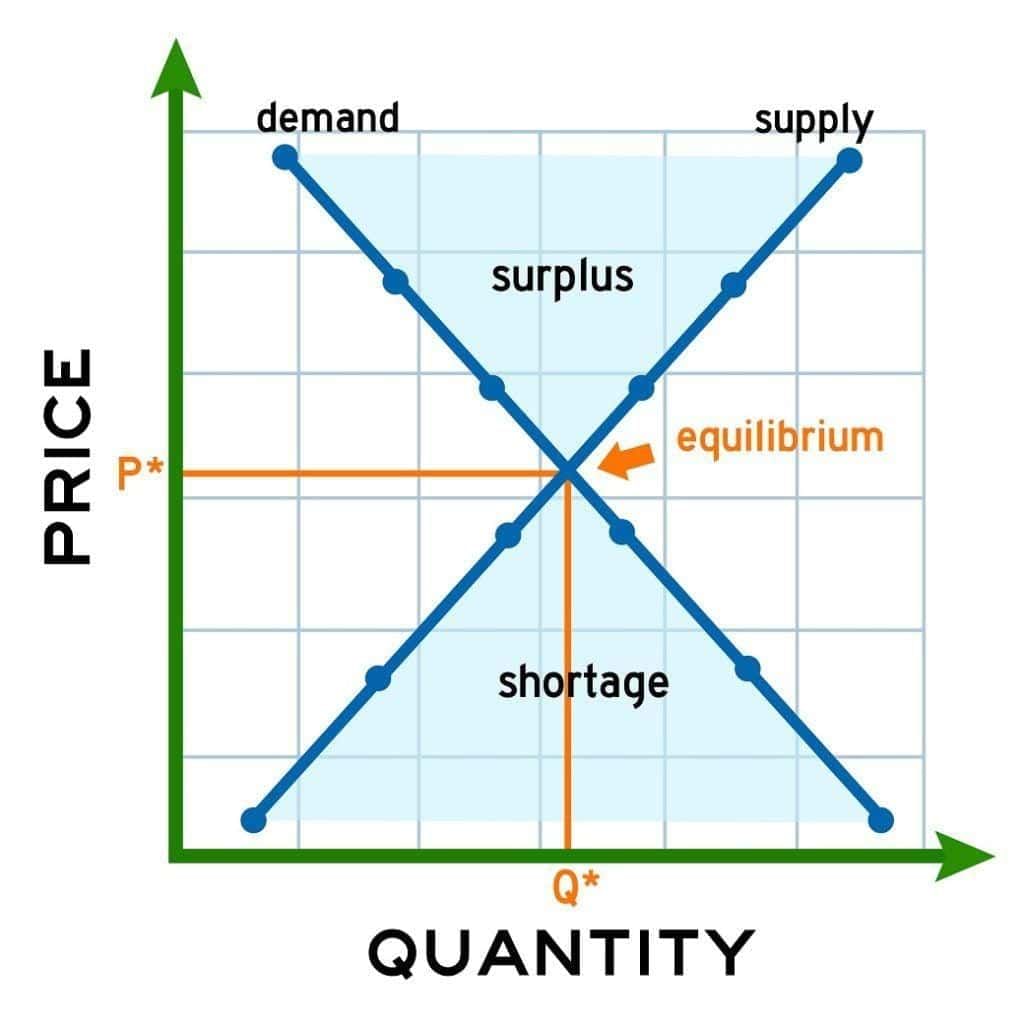
- Quantity Supplied:
- How much of a product, like apples or toys, a seller is ready to make and sell.
- Depends on the price of the product.
- Higher prices encourage sellers to make more because they earn more money.
- Example: If ice cream costs $5 a cone, a shop might make 100 cones.
- Lower prices mean sellers make less because they earn less money.
- Example: If ice cream costs $1 a cone, the shop might make only 20 cones.
- Quantity Demanded:
- How much of a product people want to buy.
- Depends on the price of the product.
- Lower prices mean more people want to buy it.
- Example: If a toy costs $2, many kids might want to buy it.
- Higher prices mean fewer people want to buy it.
- Example: If a toy costs $20, fewer kids might want it because it’s expensive.
- Key Points:
- Quantity supplied comes from sellers, and quantity demanded comes from buyers.
- Both are affected by the price of the product.
Understand Overall Supply and Demand
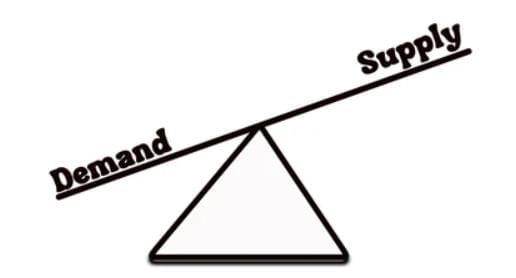
- Supply:
- The total amount of a product that all sellers are willing to make and sell at different prices.
- Example: All toy stores in a town decide how many dolls they can sell.
- Demand:
- The total amount of a product that all buyers want to buy at different prices.
- Example: All kids in a town decide how many dolls they want to buy.
- How They Work Together:
- Supply and demand decide the price of things.
- If many people want a product but there’s not much of it, the price goes up.
- Example: A popular new video game with few copies might cost more.
- If there’s a lot of a product but not many people want it, the price goes down.
- Example: A store with too many old toys might lower the price to sell them.
- Supply and demand help stores decide how much to make and what price to charge.
Create and Use Supply and Demand Curves
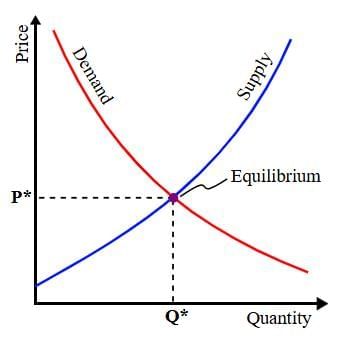
- Supply Curve:
- A line on a graph showing how much of a product sellers will make at different prices.
- Goes up from left to right because higher prices mean sellers make more.
- Example: If a cookie costs $1, a bakery might make 50 cookies, but if it costs $3, they might make 150 cookies.
- Demand Curve:
- A line on a graph showing how much of a product people want to buy at different prices.
- Goes down from left to right because lower prices mean more people want to buy.
- Example: If a book costs $5, 100 kids might want it, but if it costs $15, only 20 kids might want it.
- Equilibrium:
- The point where the supply and demand curves cross on the graph.
- Shows the price where the amount sellers want to sell equals the amount buyers want to buy.
- Example: If the curves for lemonade cross at $2 and 100 cups, 100 cups will be sold at $2 each.
- Supply and demand curves help us see how prices are decided in a market.
Identify Shortage and Surplus
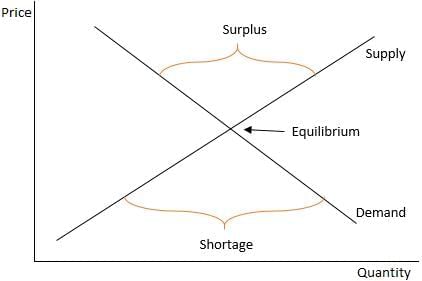
- Shortage:
- Happens when there is not enough of a product for everyone who wants to buy it.
- Example: If a store has only 10 teddy bears, but 20 kids want them, there’s a shortage.
- During a shortage, the price might go up because many people want the product.
- Happens when there is not enough of a product for everyone who wants to buy it.
- Surplus:
- Happens when there is too much of a product and not enough people want to buy it.
- Example: If a store has 100 balloons, but only 30 kids want them, there’s a surplus.
- During a surplus, the price might go down to sell more.
- Happens when there is too much of a product and not enough people want to buy it.
- Key Points:
- Shortages and surpluses show when supply and demand are not balanced.
- When there’s a shortage, sellers might make more of the product.
- When there’s a surplus, sellers might make less or lower the price.
- Understanding shortages and surpluses helps stores know how much to make or sell.
Identify Shortage and Surplus with Graphs
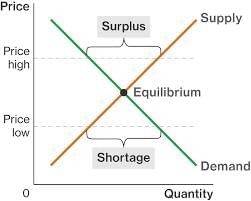
- Shortage on Graphs:
- Happens when the price is below the equilibrium point on a supply and demand graph.
- At a lower price, more people want to buy, but sellers don’t make as much, so there’s not enough.
- Example: If the equilibrium price for a hat is $10, but the store sells it for $5, more kids will want it, causing a shortage.
- Shown when the quantity demanded is more than the quantity supplied.
- Surplus on Graphs:
- Happens when the price is above the equilibrium point on a supply and demand graph.
- At a higher price, sellers want to make more, but fewer people want to buy, so there’s too much.
- Example: If the equilibrium price for a hat is $10, but the store charges $15, fewer kids will buy it, causing a surplus.
- Shown when the quantity supplied is more than the quantity demanded.
- Using Graphs:
- Graphs help us see shortages and surpluses by comparing the supply and demand curves.
- The equilibrium point shows where there is no shortage or surplus.
Identify Shortage and Surplus with Data
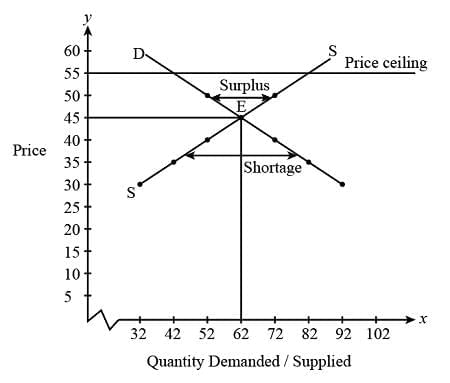
- Understanding Data:
- Data is information, like numbers, that tells us how much of a product is supplied or demanded.
- Shortage with Data:
- Example: A store has data showing they have 50 pencils to sell at $1 each, but 80 kids want to buy them.
- This shows a shortage because the quantity demanded (80) is more than the quantity supplied (50).
- Surplus with Data:
- Example: A store has 200 apples to sell at $2 each, but only 100 kids want to buy them.
- This shows a surplus because the quantity supplied (200) is more than the quantity demanded (100).
- Using Data:
- Compare the number of products available (supplied) to the number of products wanted (demanded).
- If quantity demanded is higher than quantity supplied, there is a shortage.
- If quantity supplied is higher than quantity demanded, there is a surplus.
- Data helps stores decide if they need to make more or less of a product.
- Data also helps stores decide if they should change the price to fix a shortage or surplus.
The document Supply and Demand Chapter Notes | Social Studies for Grade 4 is a part of the Grade 4 Course Social Studies for Grade 4.
All you need of Grade 4 at this link: Grade 4
FAQs on Supply and Demand Chapter Notes - Social Studies for Grade 4
| 1. What is the difference between quantity supplied and quantity demanded? |  |
Ans.Quantity supplied refers to the amount of a good or service that producers are willing and able to sell at a given price, while quantity demanded is the amount that consumers are willing and able to purchase at that same price. These two concepts are fundamental in understanding how markets operate.
| 2. How do supply and demand curves work? |  |
Ans.Supply and demand curves are graphical representations of the relationship between the price of a good and the quantity supplied or demanded. The demand curve typically slopes downward, indicating that as prices decrease, the quantity demanded increases. Conversely, the supply curve usually slopes upward, signifying that as prices increase, the quantity supplied rises.
| 3. What happens when there is a surplus in the market? |  |
Ans.A surplus occurs when the quantity supplied exceeds the quantity demanded at a given price. This typically leads to downward pressure on prices, as sellers may lower prices to clear excess inventory. Over time, the market seeks to reach equilibrium, where supply equals demand.
| 4. What is a shortage and how can it be identified? |  |
Ans.A shortage occurs when the quantity demanded exceeds the quantity supplied at a certain price. This can be identified through market observations or by analyzing data, such as when consumers are unable to purchase enough of a product at its current price. Shortages often lead to increased prices as consumers compete for the limited goods available.
| 5. How can graphs help in understanding shortages and surpluses? |  |
Ans.Graphs visually illustrate the concepts of shortages and surpluses by showing the intersection of supply and demand curves. When the demand curve is above the supply curve at a certain price, a shortage is indicated. Conversely, when the supply curve is above the demand curve, a surplus is shown. Analyzing these graphs helps in understanding market dynamics and pricing strategies.
Related Searches















